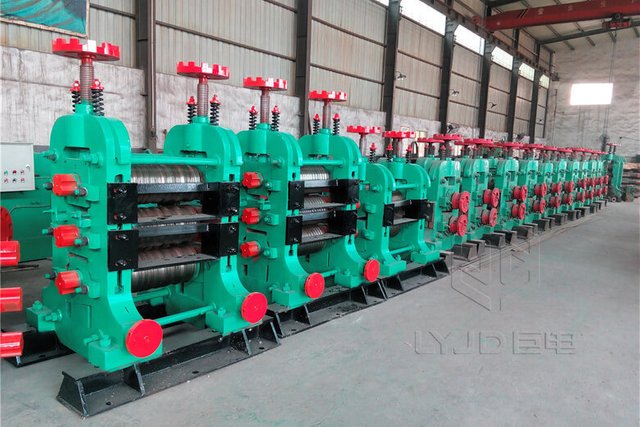As a common building material, hot-rolled angle steel is widely used in various industries. It has good mechanical properties and toughness and can withstand complex mechanical environments. So, what is the manufacturing process of hot-rolled angle steel? Let’s learn more about it below.

The manufacturing process of hot-rolled angle steel mainly includes raw material processing, hot rolling, cold rolling, cutting, and heat treatment. Below, these processes will be explained one by one.
Raw Material Processing
Raw material processing is the first step in the hot-rolled angle steel manufacturing process. Generally speaking, the raw materials of hot-rolled angle steel are mainly hot-rolled plates and billets. First, the raw materials are sawed into blocks of a certain length and width. Next, the blocks are subjected to a heat treatment to bring them to a certain temperature. Doing so improves the plasticity of the steel, making subsequent rolling operations smoother.
Hot Rolled
Hot rolling is the core link in the manufacturing process of hot-rolled angle steel. The heat-treated steel billet is fed into the hot rolling mill for rolling. The whole process is mainly divided into two stages: rough rolling and finish rolling. Rough rolling is mainly to compress the steel billet to a certain thickness in preparation for entering the next stage of finishing rolling. Finish rolling is to further suppress the steel billet to reach the required standard size. During the hot rolling process, the billet experiences constant pressure and friction, causing the shape and size of the billet to change.
Cold Rolled
Cold rolling is a complementary link in the manufacturing process of hot-rolled angle steel. During the hot rolling process, due to the continuous high temperature and pressure, the internal structure of the steel will change, forming certain grains and defects. Through cold rolling, the internal structure of the steel can be rearranged and adjusted, thereby improving the strength and hardness of the steel. In addition, cold rolling can also improve the surface finish and dimensional accuracy of steel, making the steel more suitable for various process requirements.
Cutting
Cutting is one of the subsequent processing steps in the hot-rolled angle steel manufacturing process. During the hot and cold rolling processes, steel billets are pressed into angles of different shapes and sizes. In practical applications, it is often necessary to cut to a specific length. Therefore, it is very necessary to cut the steel. The cutting method can be selected according to specific requirements. Common methods include flame cutting, plasma cutting, and mechanical cutting.
Heat Treatment
Heat treatment is the final step in the manufacturing process of hot rolled angle steel. During the hot rolling and cold rolling processes, the internal structure and properties of steel will change due to the effects of temperature and pressure. To further adjust and improve the properties of steel, it needs to be heat treated. Heat treatment methods mainly include normalizing treatment, quenching treatment, tempering treatment, etc. Through heat treatment, the hardness, toughness, and strength of steel can be improved, making it more suitable for various application scenarios.
In short, the manufacturing process of hot-rolled angle steel is complex and delicate. Through raw material processing, hot rolling, cold rolling, cutting, and heat treatment, hot-rolled angle steel products that meet various standards and requirements can be produced. Hot-rolled angle steel provides strong and reliable building materials for various industries with its excellent performance and wide range of applications.